Blog
Blog 2025年2月
-
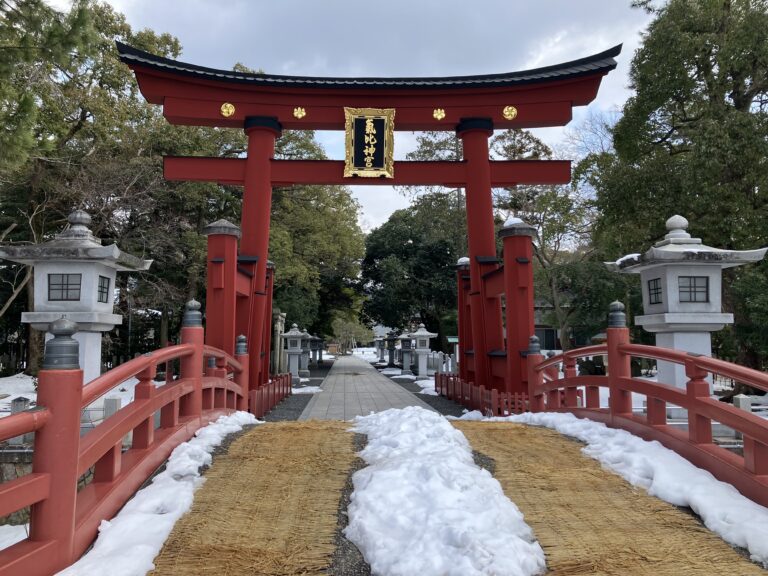
Kehi Shrine
The Kyoto-Kanazawa-Shirakawa-go-Takayama route is popular with foreign tourists. However, as the Hokuriku Shinkansen has not yet fully opened, train travel between Kyoto and Hokuriku has become very inconvenient and expensive. It is necessary to change from the limited express Thunderbird to the Hokuriku Shinkansen at Tsuruga Station. If you come all the way to Tsuruga, you may want to drop in at Kehi Jingu Shrine, which is known as the largest spiritual site in the Hokuriku region. It is a 15-minute walk from Tsuruga Station, so it is a good spot to visit while waiting to change trains. The Chomeisui (long-life water),…
- Hokuriku
- Spot introduction
-
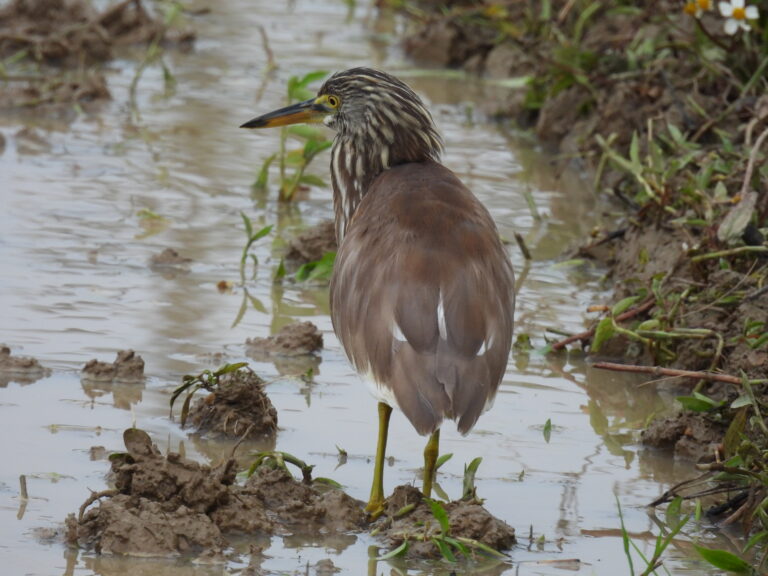
Chinese pond heron
Breeding plumage is wine-coloured from head to neck and breast, but non-breeding plumage is very plain, as shown in the photograph. A small number spend the winter on Ishigaki Island. There are an increasing number of other records of the Javan pond heron, which is distributed in South-East Asia, flying to Ishigaki Island. Their winter plumage is similar and it is difficult to identify them in the field. It is said to be characterised by its slightly larger size, larger bill and darker wing tips in flight than the Javan red-faced night heron. Other Japanese records include the Indian pond heron,…
- Birds
- Ishigaki Island
-
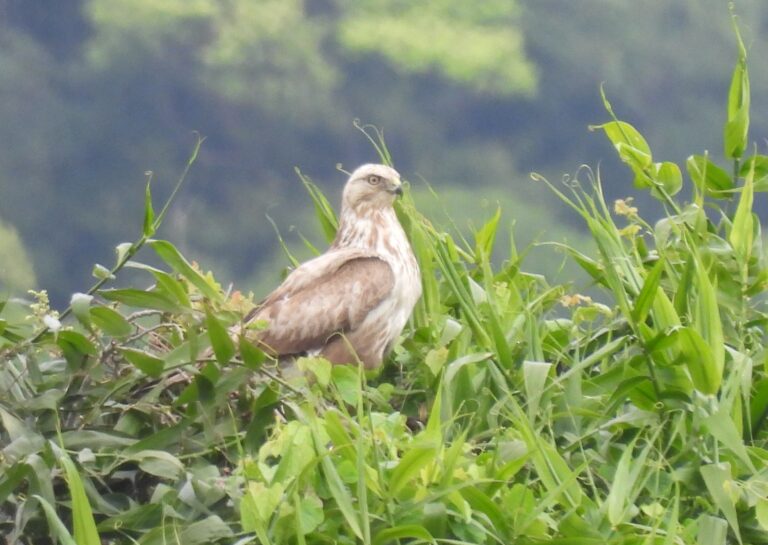
Upland buzzard
This buzzard inhabits the mountains and rocky areas of eastern Asia and is a rare migrant to Japan. It has been observed on the Sea of Japan side and in the Nansei Islands. They are also observed on Ishigaki Island in winter, but are very wary and difficult birds of prey to photograph. This one initially landed in a rice paddy, but when we drove by, it flapped its wings and perched on a tree 400m away.
- Birds
- Ishigaki Island
-
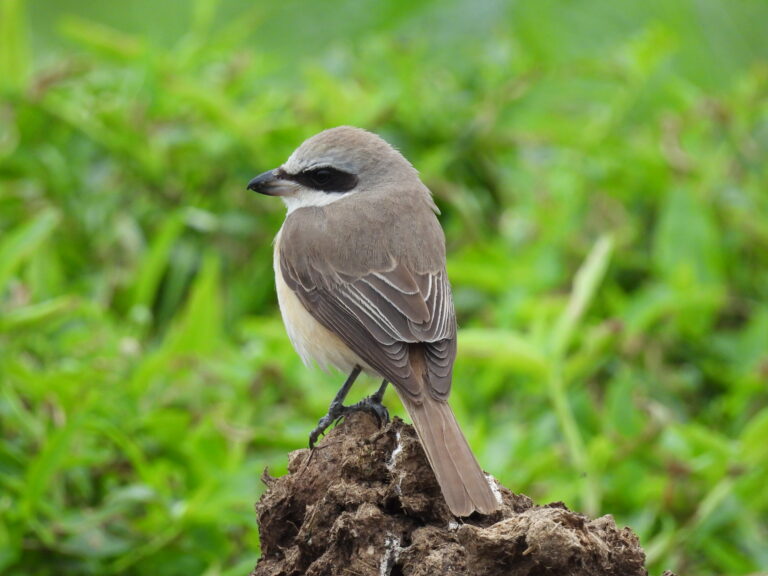
Brown shrike
The Brown shrike (Lanius cristatus lucionensis) is one of the most commonly seen birds on Ishigaki Island in winter. It is a subspecies of endangered species, the Japanese brown shrike (Lanius cristatus superciliosus) It used to breed in southern Kyushu, but now it seems to be wintering in the Nansei Islands, having migrated from the continent. Compared to the other subspecies, Lanius cristatus lucionensis is characterised by its generally greyish colouration. In English and French, the shrike is synonymous with noisy or quarrelsome birds because of its noisy voice. In Japan, on the other hand, the kanji 百舌鳥 for "bird with…
- Birds
- Ishigaki Island
-
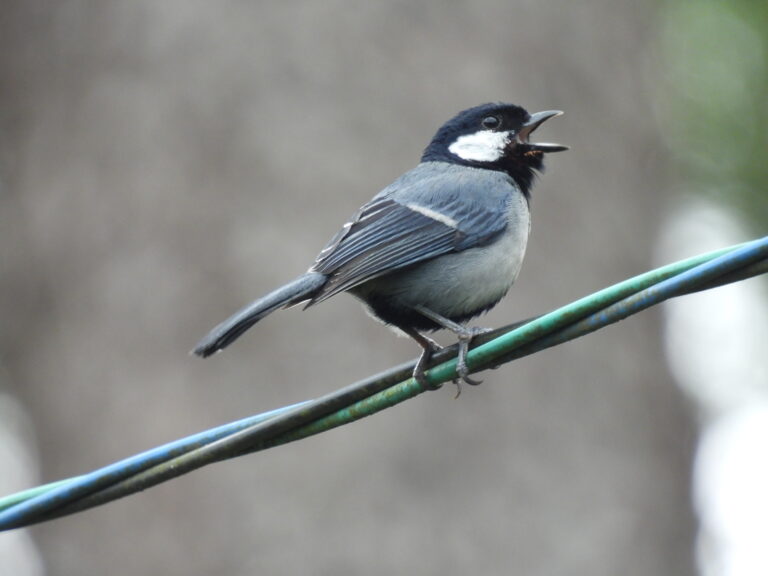
Ishigaki tit
The Japanese tit is found throughout Japan, but the Japanese tit distributed on the outlying islands are divided into three subspecies: the Amami tit, the Okinawa tit and the Ishigaki tit. The two subspecies of Amami and Okinawa are almost indistinguishable in appearance from the mainland subspecies, but only the Ishigaki and Iriomote Islands' Ishigaki tits are clearly different. It is generally a blackish grey colour and the yellowish green back characteristic of the tits is completely absent. A blackened tit was previously found in Eastern Japan, but although the head was completely black, the yellow-green back was still present.…
- Birds
- Ishigaki Island
-

Ryukyu flycatcher
The Ryukyu flycatcher is considered a subspecies of the Narcissus flycatcher, but is also thought to be endemic to the Nansei Islands. The Narcissus flycatcher male's throat is orange, whereas the Ryukyu flycatcher's is all yellow, with a slightly olive-red back. Their distinctive call is a subdued fee-fee. They are not few in number, but are one of the most difficult birds to photograph because they move around so much. It is a happy bird when we can find it.
- Birds
- Ishigaki Island
-

Black-winged kite
The black-winged kite is widely distributed mainly in the African continent, South Asia and Southeast Asia. It is a rare stray bird in Japan due to its outlying distribution area, but on Ishigaki Island it has become established and breeds and can be observed all year round.I first saw it in Senegal. It was a bird that was very wary and would fly away if I approached it even a little. When I saw it on Ishigaki Island a few years ago, I only saw it in the distance.Recently, however, there are more and more individuals that are less cautious,…
- Birds
- Ishigaki Island
-
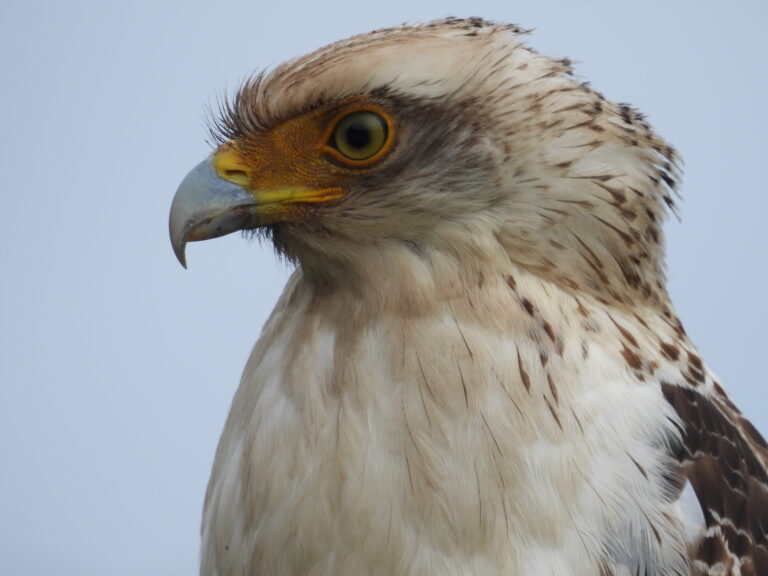
Ryukyu serpent eagle
The crested serpent eagle is the symbol of Ishigaki Island. It is widespread from India and China to South-East Asia, but Japanese subspecie, Ryukyu serpent eagle, is an endangered species in Japan. Deaths due to traffic accidents are particularly serious. According to Mr Kobayashi of SeaBeans, who has been guiding on Ishigaki Island for many years, four have already been killed this year. When you drive on the roads of Ishigaki Island, you will see signs warning of crested serpent eagle accidents here and there. They often appear on the side of the road when the weather is bad. The bird in…
- Birds
- Ishigaki Island
-
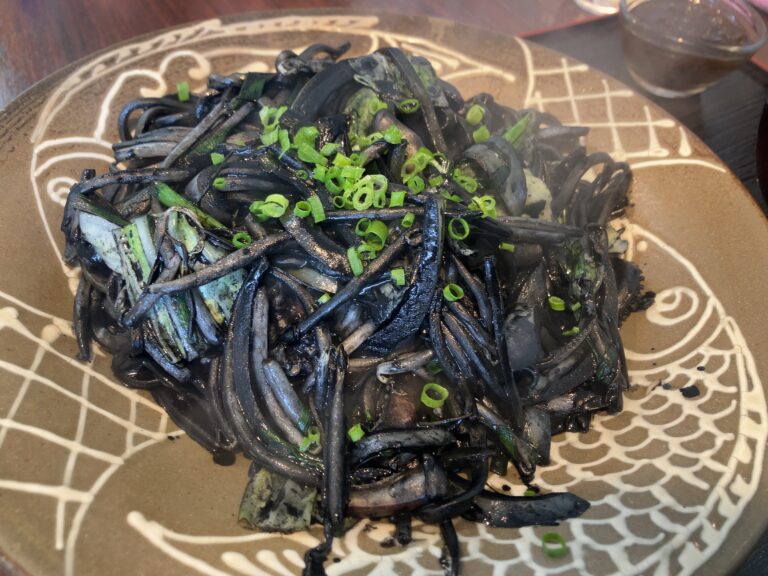
Pāntu shokudō
The local restaurant, Pāntu shokudō, is located just over 10 minutes' walk from the mangrove forests of Shimajiri. The Pāntu yakisoba (fried noodles), inspired by the black mud figure of the gods and many locals, are highly recommended. It tastes similar to squid smelt spaghetti, but the noodles are Miyako soba. The slightly thicker flat noodles are a perfect match. The mangroves of Shimajiri do not have many wild birds, but there is a well-maintained boardwalk where you can observe shorebirds and plovers that drop in during the spring and autumn migrations. At low tide, they can be seen pecking at…
- Miyako Island
-
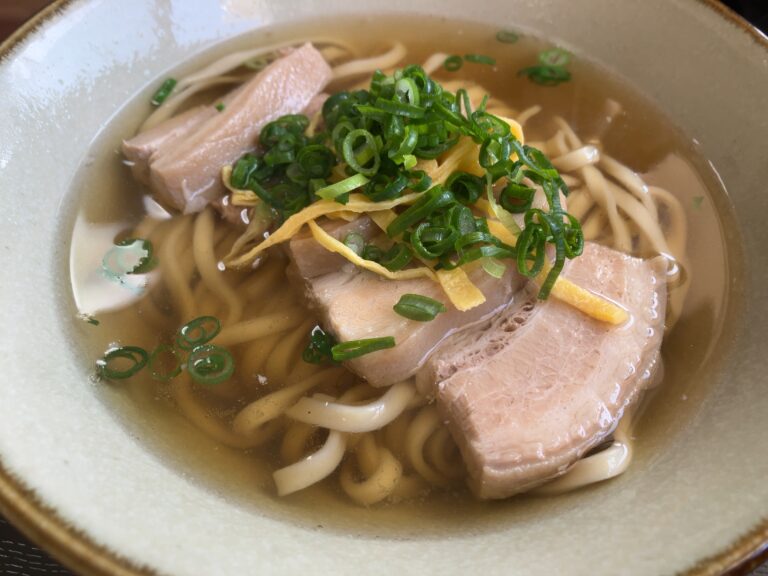
Miyako soba noodle
Food is one of the pleasures of travelling, but one thing that has never been more popular is Okinawan soba. Although soba are commonly known as fresh or dried Japanese noodles made from buckwheat flour, Okinawa soba is a unique evolution of Chinese noodles. Unlike ramen, many people do not like the unique noodles or the lightly flavoured soup. Like ramen, there are regional variations of Okinawa soba. Among them, Miyako soba from Miyako Island is like thin udon noodles and seems easy to eat. While Okinawan soba noodles are thicker and frizzier, Miyako soba noodles are flat and made without…
- Miyako Island
-
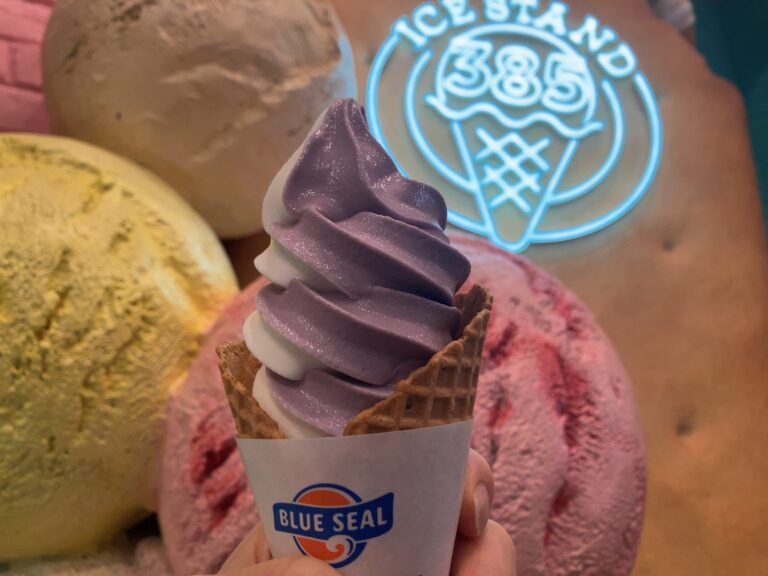
Okinawa Ice Cream
When visiting supermarkets on Miyako Island, the variety of frozen foods is astonishing. In particular, the abundance of ice-creams is enviable: the red potato and chinsuko (traditional small biscuit made of mostly lard and flour in Okinawa) ice-creams from Okinawa Meiji Dairies Corporation, known under the okimei brand name, would be bought up if they were available on the mainland. Blue Seal, on the other hand, established the Okinawa ice cream brand with the slogan ‘Born in America, Raised in Okinawa. At the Painagama branch on Miyako Island, the colourful ice-cream sculptures are a popular photo spot. There is also a…
- Miyako Island
-
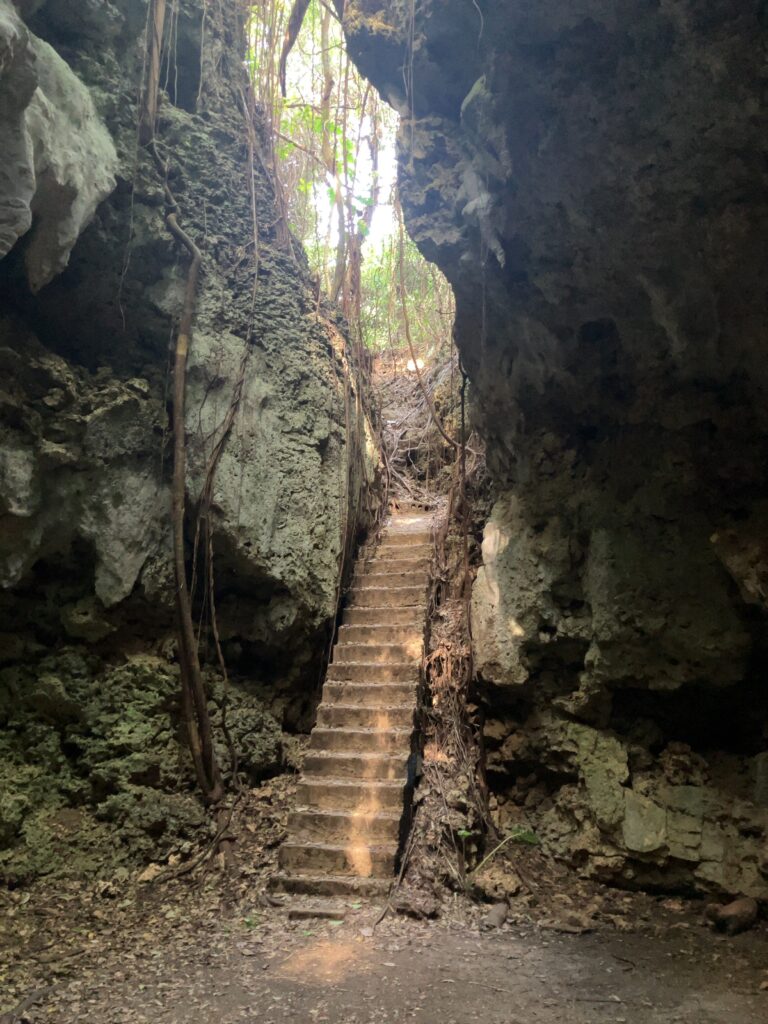
Nudokubiabu
From Miyako Island, cross the 3.5 km Irabu Ohashi Bridge to Irabu Island. In the middle of an expansive sugar cane field lies the entrance to a cave called Nudokubiabu. The cave, which is 22 m deep and 25 m long, has a large vertical hole inside, where a very fantastic sight can be seen, with banyan trees extending their roots from the ground. It has recently become a popular power spot, but the downside is that it is difficult to find. There is only a small signboard and no parking space, so you have to park your car on the side…
- Miyako Island
